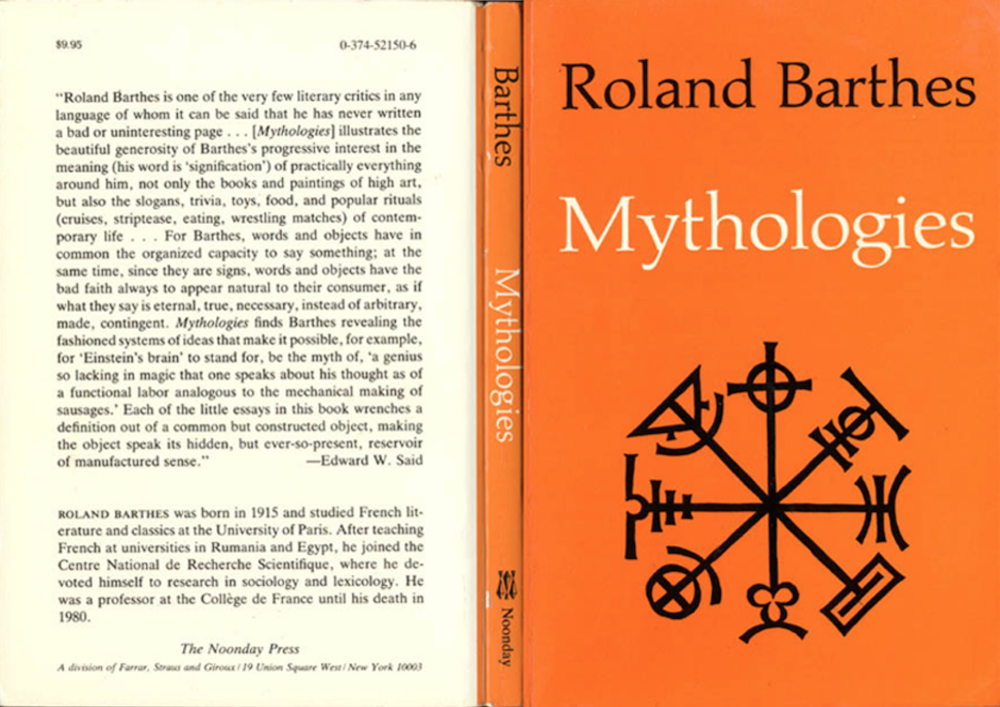After the second week of the brief, I began to look more critically at the ad hoc open compound naming conventions of South Asian restaurants and how these could be used as a means of recontextualising an image. At this point, I began to frame my enquiry specifically through the lens of Roland Barthes’ Mythologies (1972) and through the process of reading and trying to ingest the nature of myth-making, I admittedly began to spiral when trying to better understand the position of my own work within this context: was I making myths or signs? Was I being satirical, critical or both? Was the appropriation of these names (themselves appropriated from a colonial caricature) a mockery or a celebration? I scribbled down the following set of disjointed notes on a late weeknight, in hoping of making better sense of it all.
MYTHOLOGIES
- Presenting the image of ‘something’ but not something itself
- “What the public wants is the image of passion, not passion itself” (Barthes, 1972)
- Fringes, sweat → a sign of something → Roman-ness, morality
- Wine → gesture vs. intention. In other EU countries, people drink to get drunk but in France, one doesn’t drink for that. Drunkenness is a consequence, not an intention → wine = the leisurely act of drinking
- Barthes talks about how everyday objects are depicted/function in a way that says something about them. Example: wine is a part of everyday life, for its certain characteristics are opposed to milk. Similarly my intention was to take these words and images and let them evoke something in each individual viewer and what that would suggest about the new context of repurposed historical fragments, particular to a certain time and place.
- Double edged sword of wine: capitalism, expropriation, imposition of alcohol on Muslims in Algeria
- Virtues of elegance, entrenched in a social and national imaginary. So too are these words/open compounds → part of the Orientalist imaginary
- Myths are based on ornamentation, rather than substance
- Mythical → Elle doesn’t show food except from a high vantage point
- Signifier = meaning (an image with a meaning) is self-sufficient, but a myth comes and turns it into “an empty, parasitical form”
- Myths don’t consider the individual histories of the image, instead the form eradicates that
- My prints can function both ways: 1. they divorce meaning by taking everything at face value (myth) → Orientalist / 2. they suggest something deeper if taking into account histories of the words and their implications (not myth, but irony)
- Myths work with ‘poor’ images, pastiches or caricatures
